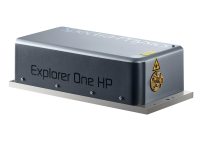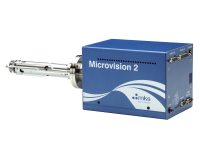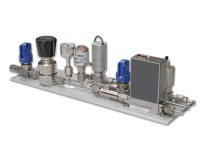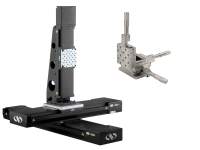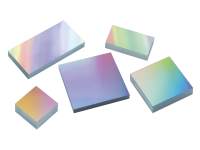MALDI Time-of-Flight Mass Spectrometry
MALDI Time-of-Flight Mass Spectrometry
MALDI Time-of-Flight Mass Spectrometry
MALDI is similar in character to ElectroSpray Ionization (ESI) in that both techniques produce low molecular fragmentation on ionization. A primary difference between MALDI and ESI is that the former typically produces ions with a net single charge and this enables simple determination of molecular mass for most compounds. However, it can also limit the ability to analyze the largest macromolecular proteins. MALDI ionization requires three steps:
- A sample is mixed with a suitable matrix material and applied to a metal plate. As the mixture dries, crystals are formed on the sample material, that are critical for efficient ionization.
- A pulsed laser beam impinges on the sample, causing desorption of the sample and matrix material. The matrix material breaks down in this process to produce gas phase ionic species.
- Finally, the analyte molecules are ionized via protonation or de-protonation in the hot plume of ablated gases. The ions are then accelerated into a mass spectrometer system for mass analysis.
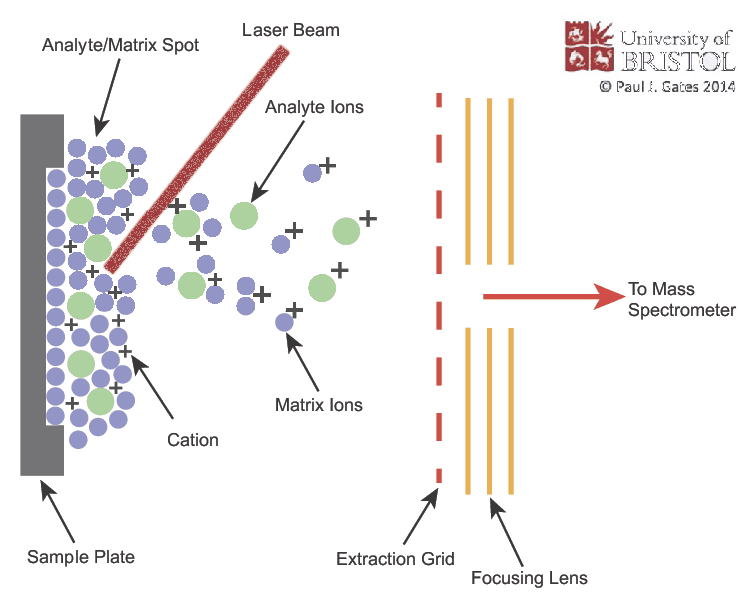
- Laser technologies
- UV gas lasers, e.g., nitrogen laser operating at 337 nm
- DPSS Nd:YLF or Nd:YAG lasers with frequency-tripling (operating at 349 nm and 355 nm, respectively)
- ToF MS
- Axial ToF . affordable performance, speed, ease-of-use
- Orthogonal-acceleration ToF . higher performance, specificity, flexibility
- Ion mobility spectrometry orthogonal-acceleration ToF - highest specificity
- Tandem quadrupole MS
- Industry standard quantitative platform (despite limited MALDI linearity)
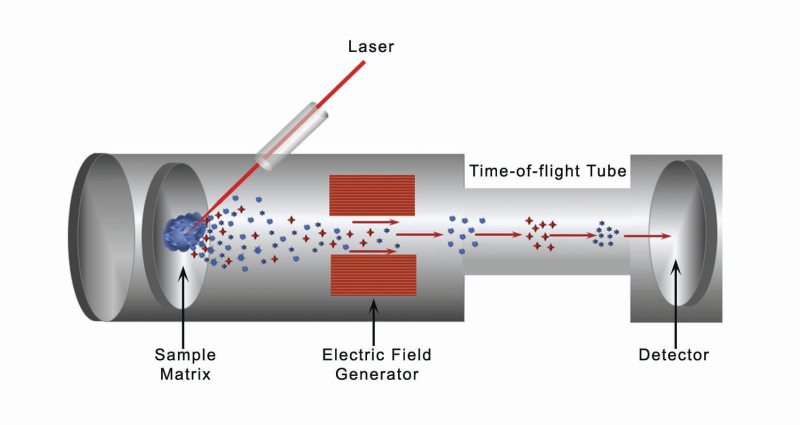
Typical applications for MALDI MS include, but are not limited to:
- Biochemistry and molecular biology, e.g., proteomics, glycomics
- Organic chemistry
- Polymer analysis
- Microbiology
- Medical and diagnostics
Impact of Photonics on MALDI
The incorporation of photonics technologies into MALDI MS instruments dramatically improves the sensitivity, throughput, and ease of use of these systems. This has led to their increased deployment in biological and polymer research where MALDI systems have provided an attractive alternative to older, more complicated high-performance Liquid Chromatography (LC/MS) units. Additionally, improvements in laser technology have enabled high-speed analysis, which significantly increases the throughput of protein identification in proteomics research laboratories. More recently, as ESI-LC/MS has become the preferred method for proteomics, MALDI MS has found wider application in microbiological, pharmaceutical development and medical-related applications. The key advances in laser technologies and their consequences for MALDI methods are:
- Tunable wavelengths - more efficient ionization of biomolecules
- Increased repetition rates - speed of analysis
- Improved lifetime and cost of ownership - reduced complexity and increased reliability
MALDI MS units have been increasingly used in imaging applications where the highly localized nature of laser ablation allows the determination of the concentrations and spatial locations of compounds of interest in a wide range of sample types, especially biological tissues. The key photonics technological drivers for advanced imaging of compounds in tissues include:
- Laser repetition rate (> 1 kHz) - this enables fast processing of large tissue/sample sections
- Laser energy profile - this ensures minimal denaturation of a sample below the ionization threshold which, in turn, improves sensitivity, particularly for spot sizes below 20 µm
- High precision optics and motion control - this provides the ability to reliably measure spatial locations under 10 µm
Imaging applications are currently driving the equipment requirements in research environments within the life science and clinical communities. The critical equipment characteristics for MALDI units in these applications include:
- High resolution imaging - sub-20 µm spatial resolution
- Sample stage control - fine X/Y control, high robustness and reproducibility
- Speed of acquisition - using small spot size, GHz pulse rate, top-hat energy profile
- Flexibility - coupling of lasers by optical fiber
Explorer® One™ 349 nm lasers have been specially designed with MALDI customers in mind. With the Explorer One series, users can rely on reliable ionization process and eliminate unwanted side effects, thus increasing the longevity of the laser and avoiding unnecessary service interruptions. Explorer One lasers are offered at a variety of pulse energy values from 30 to120 mJ and typical pulse width of < 5ns.
MALDI Time-of-Flight Mass Spectrometry Products
Related Topics
Life and Health Science Applications
Mass Spectrometry
